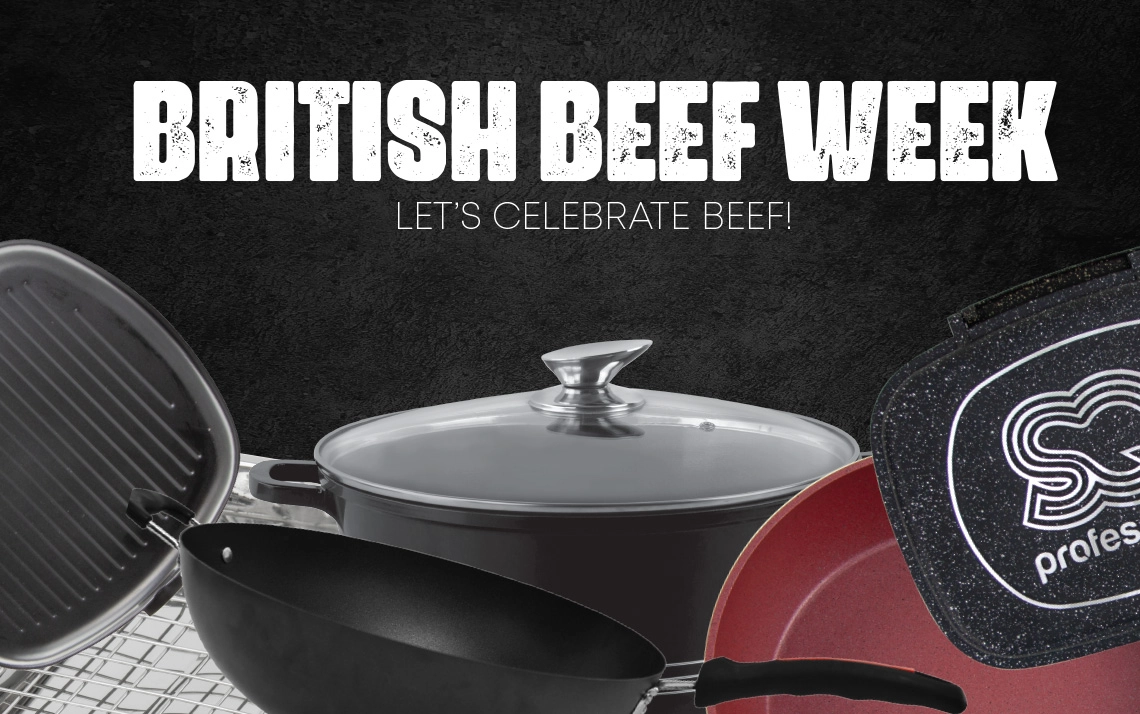
For beef lovers, this week is the celebration of British beef and we would like to take this as an opportunity to explore the most common methods of cooking meat. There are various ways to cook meat and methods should be selected based on the initial tenderness of the cuts, desired quality characteristics of the resulting product, available cooking facilities and equipment, and the amount of time available for preparation.
In today's blog, we are going to talk about dry heat and moist heat cooking techniques and the differences between them.
Are suitable for tender cuts of meat or less tender cuts which have been marinated, resulting in tender and juicy products.
One of the most common methods of Dry heat includes:
Uses the air in the oven or other cooking device to heat the meat. This method of cooking is recommended for larger cuts of beef. Oven temperatures and times durations for roasting can vary significantly depending on the cut. Meat is almost always browned first.
Best cuts for roasting: prime rib, sirloin roast, ribeye roast, whole tenderloin roast, chuck roll, rump.
Is a method that uses direct heat to brown the outside without overcooking the inside.
Best cuts for broiling: chuck eye steak, denver steak, ranch steak, flat iron steak, tenderloin steak (filet mignon), strip steak, porterhouse steak, T-bone steak, ground beef, kabobs, tri-tip steak, top sirloin steak, sirloin tip centre steak and ribeye steak.
Is the most popular method to cook what we know of as "steaks". Grilling means cooking over a gas or charcoal grill or other heat sources. Grilling usually involves high heat for a short period of time, with or without a finish, on lower or indirect heat.
The best cuts of beef for grilling are: ribeye steak, tenderloin steak, sirloin steak, porterhouse, flank steak, T-bone, rump, prime rib, hangar steak and skirt steak.
Pan-broiling is a faster and more convenient method than oven broiling for cooking thinner steaks or chops.
Best cuts for pan-broiling: rib-eye steak, T-bone steak, sirloin, fillet steaks, rump steak, and hanger steak.
Pan-frying differs from pan-broiling in that a small amount of fat is added first, or allowed to accumulate during cooking. Panfrying is a method of cooking that is suitable for ground meat, small or thin cuts of meat, thin strips, and pounded, scored or otherwise tenderized cuts that do not require prolonged heating for tenderization.
Best cuts for pan-broiling: rib-eye steak, T-bone steak, sirloin, fillet steaks, rump steak, and hanger steak.
Is a Chinese cooking technique in which ingredients are fried in a small amount of very hot oil while being stirred or tossed in a wok over high heat, for five minutes or less. Vegetables emerge crisp and bright, while meats are flavourful, tender, and well-seared.
Best cuts of beef for stir-frying: fillet, ribeye, sirloin, T-bone, rump, tenderloin, flank steak and skirt steak.
Are suitable for less tender cuts of meat that must be cooked for longer periods of time to soften the connective tissue, helping to reduce surface dying in those cuts requiring prolonged cooking times. Unless a pressure cooker or a stockpot is used, cooking temperature is usually low, but heat penetration is faster than in dry-heat methods because steam and water conduct heat rapidly.
With moist-heat cookery, meat may lose some water-soluble nutrients into the cooking liquid. However, if the cooking liquids are consumed, as in stews or soups, nutrients are transferred and not totally lost.
Braising uses the steam trapped in the container and is often used for less tender cuts of meat like a roast.
The best cuts of beef for braising are: brisket, chuck roast, rump roast, short ribs.
Stewing A staple of the colder months, this cooking technique is very similar to braising, except that stewing submerges the beef completely in liquid, while braising does not. The meat is generally cubed or cut into small pieces prior, and the cooking time can be shorter as a result. Inexpensive cuts are usually the best for stewing.
Best cuts for stewing: chuck roast, chuck shoulder, round roast, short ribs and cross-cut shanks.